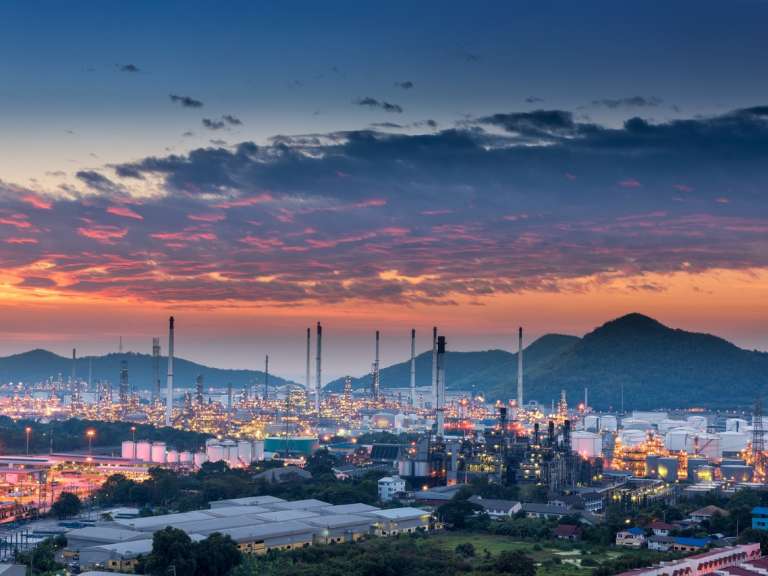In December 2017, in an announcement that could have long-term implications for the global power sector, China's government said it will implement a national cap-and-trade program to reduce the use of coal in power plants, according to POWER.
China's emissions-trading scheme (ETS) is significant because it will be the biggest in the world—around twice the size of Europe's. Could this move be the catalyst for a global CO2 market?
Global Carbon Trading
A cap-and-trade scheme sets an overall limit on emissions that are allowed from significant sources of carbon, such as power plants. Permits are issued by governments for up to the agreed limit. They are then either handed out free or auctioned to companies. Essentially, being required to buy permits for carbon emitted over a set level incentivizes key polluters to curb their pollution.
According to POWER, China has set quotas for energy producers emitting more than 26,000 tons of CO2 per year, which includes around 1,700 facilities responsible for about 33.9 percent of China's total emissions. The ETS was originally announced several years ago, with trials running in seven cities across the country.
About 40 countries or jurisdictions, including the EU, Canada, Korea, and Mexico, have developed emissions markets or plan to in the near future. As more countries consider carbon markets, many experts believe China's ETS—due to its size and scale—could be the catalyst for a global carbon market, with different countries linking up to trade.
Paula DiPerna, special adviser with CDP North America, described the moment as a "significant structural shift" in a comment to Bloomberg. Similarly, the environmental group Carbon Market Watch thinks the world is moving "closer to global pollution pricing." If so, this shift could potentially have significant implications for the global power sector.
Determining Financial Risk
The financial risk for power producers from carbon cap and trade generally depends on how many permits are issued, as well as a power producers' carbon efficiency and their business model.
For example, the ETS in Europe has largely been viewed as less punitive than originally planned because a lot of permits were released, which has kept the carbon price low. Furthermore, the global downturn resulted in a fall in energy demand and fewer carbon emissions than predicted. As the global economy improves, however, this is set to change.
Carbon-trading schemes are already becoming more progressive. Korea announced a cap for its trading scheme last year that is 2.3 percent lower than the cap for 2017, according to SDG Knowledge Hub. In the EU, emissions limits are reduced every year by 1.8 percent.
The impact of higher carbon prices will, of course, hit coal-fired power stations hardest.
"In the UK, we have seen coal use fall almost entirely due to the carbon price [that] pushed the price of coal above that of gas, so power stations used more gas than coal," Professor Paul Ekins, director of UCL Institute for Sustainable Resources, tells Transform.
"In the future, investors will consider if policymakers are serious about reducing carbon emissions and preference investing in low-carbon generation for projects with a 30-year-plus lifespan," Ekins says.
Toward the end of this timeframe, it's possible the carbon price could be around 50 euros a ton, he adds, which it will need to be to hit the international carbon tariff.
Future Carbon Trading
To reach a carbon price that results in pollution reduction globally, there needs to be a lot of trading. Given that 175 countries have become party to the Paris climate accord, there is a clear incentive to link up internationally to trade carbon.
Although it is impossible today to determine what such a market might look like, how it would work, or what cost a ton of carbon would be, this is something power generators need to consider now, especially when planning for the future of their operations.
As DiPerna told Bloomberg: "Companies will have to improve their internal capacity, hire consultants, and figure out how far downstream they are from the price of carbon. Carbon could cost $4 a ton in China, $13 in California, and $6 in the EU, and companies will need to figure out how to smooth this out."
She adds that firms will have to start managing the cost of carbon as they do foreign currencies.
Companies can pass on some costs to customers. "Because electricity isn't traded much between borders and is a closed market, this is easier, but companies will still try and save emissions, because even if you can pass the costs on to customers, the permits can be sold for money," says Ekins.
In a carbon-trading world, where carbon prices are likely to increase over time, emissions reduction, efficiency, and the ability to adapt to this new burgeoning cost pressure is imperative. Those that do adapt will be rewarded with a new revenue stream.
Investment in Innovation
The hope is that this will spur investment in innovation and technology in the global power sector. "Assuming the market is financially and environmentally credible to people observing it, it could create price signals that stimulate a lot of innovation," DiPerna added.
Companies should consider investing in cleaner forms of energy, such as gas-fired power and renewables. Most importantly for fossil-fuel burners, plants must incrementally reduce their carbon footprint with technology investments. This can be done by upgrading and retrofitting aging coal plants, investing in the most-efficient gas turbines, and adopting innovative technologies that result in emission reductions and efficiency gains. These technologies include data analysis systems, digital twins, and other new digital systems that provide insight into operations.
Though a global carbon-trading scheme may be some way off, national carbon pricing in a growing number of jurisdictions is here to stay. The carbon price, though low presently, will inevitably increase. Those that invest and prepare now will have the most gain and the least to lose later.
